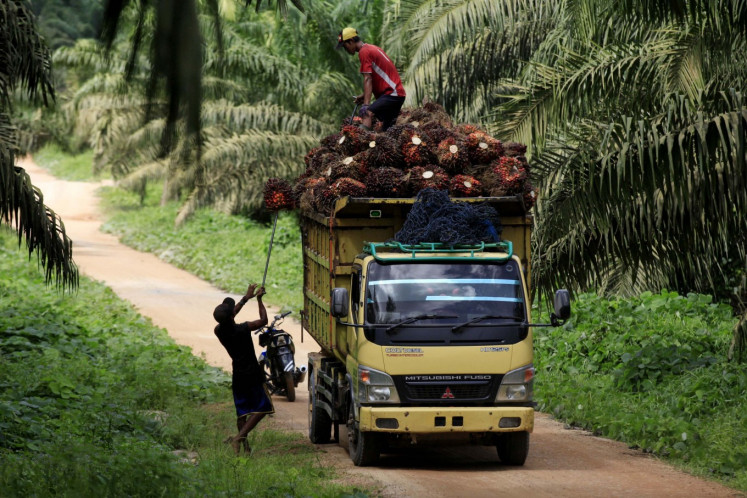Popular Reads
Top Results
Can't find what you're looking for?
View all search resultsPopular Reads
Top Results
Can't find what you're looking for?
View all search resultsArun set to further reduce production next year
Aceh-based liquefied natural gas (LNG) producer PT Arun NGL will further reduce production to 30 cargoes next year, down from 39 this year, due to declining gas supply
Change text size
Gift Premium Articles
to Anyone
A
ceh-based liquefied natural gas (LNG) producer PT Arun NGL will further reduce production to 30 cargoes next year, down from 39 this year, due to declining gas supply.
“For 2011, Arun may produce 30 LNG cargos, most of which will be exported to Japan and Korea,” Arun corporate secretary Suparman told The Jakarta Post on Friday. Japan would receive four cargos, while South Korea secured 23 cargos, he said.
The remaining cargos will be distributed to domestic fertilizer company PT Pupuk Iskandar Muda (PIM), which is also located in Aceh, Suparman said.
“Gas production in Aceh continues to decline,” Suparman said. “This year we will produce 39 cargos. Japan will receive five cargos, while Korea and PIM will receive 29 cargos and five cargos respectively,” he added.
Arun, located in North Aceh, expects to cease operations in 2014 due to depletion of its gas reserves.
Arun’s achieved its highest production in 1994 when the company exported 224 cargos, or 16.2
million tons of LNG. Arun is owned 55 percent by Pertamina, 30 percent by ExxonMobil Indonesia and 15 percent by a consortium of Japanese buyers.
The government is considering a number of options for utilizing the Arun LNG facilities after 2014.
One plan is to convert the LNG processing plant to LNG receiving terminals.
The receiving terminals would be used to facilitate gas supply for the PIM fertilizer plant.
Another plan is to convert the facilities to produce bio-fuel and other products using palm oil as its raw material. “We are presently conducting feasibility studies on these options,” Suparman said.
Suparman acknowledged that it would be easier to convert the facilities in Arun to become an LNG receiving terminal.
“The investment needed for a receiving terminal will be about US$80 million, much lower than constructing a new ones which might need up to $300 million.
In addition to Arun, Indonesia has two other LNG producers — the Bontang LNG plant in East Kalimantan and the Tangguh LNG plant in West Papua.










